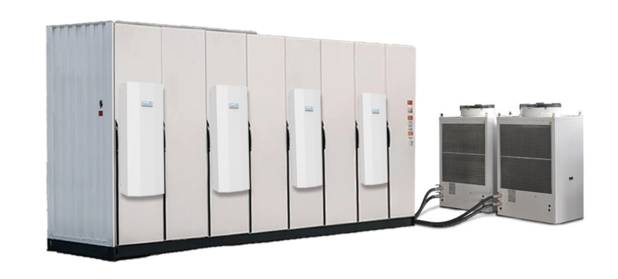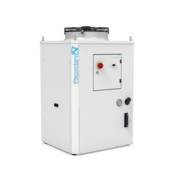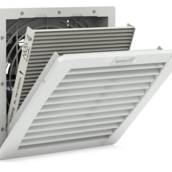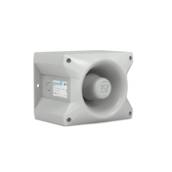Hydrogen As A Sustainable Energy Resource
Green hydrogen is becoming a key component in bringing about energy transition and ensuring a sustainable future. We at Pfannenberg have moved early to embrace this new technology and support it through the design of thermal management and
signaling solutions that extend its life and effectiveness.
We are at your complete disposal to study together solutions for different types of applications.
Please contact us!
Energy conversion and hydrogen processing
Hydrogen electrolysis is splitting water molecules into hydrogen and oxygen through electricity. Hydrogen can be generate to create fuel cells, used in various applications such as powering vehicles, buildings, and other industrial processes.
Cooling systems can remove the heat generated during electrolysis, thereby maintaining a constant operating temperature within the electrolyser, which is critical for optimal performance and longevity. The cooling system typically consists of a heat exchanger - that uses a cooling fluid such as water or air to dissipate the heat generated by the electrolysis process – and a chiller that refrigerate the cooling fluid itself. The cooling system can be integrated into the electrolyser unit or be free-standing and connected via pipes or hoses.
Electrical cabinets are an essential component of hydrogen electrolysers, as they contain the electrical components that control the electrolysis process. Also these components can generate a significant amount of heat during operation, and in this case cooling can take place both by air - through filterfans, air/air heat exchangers or cooling units depending on the heat load - and by liquid - through air/water heat exchangers, perhaps connected to the same chiller that serves the electrolyser.
Even electrolysis power supply systems have electrical components that need to be protected from excess heat, and the same applies to electrical substations: we can intervene with standard or customized solutions, depending on project requirements.

Hydrogen storage systems
Hydrogen storage systems are a vital to hydrogen energy systems, as they provide a means to store hydrogen for later use. However, hydrogen storage can be challenging due to the low density of hydrogen gas, which requires high-pressure storage or cryogenic temperatures to achieve sufficient storage capacity.
Regardless of the storage method used, cooling systems are often required to manage the heat generated during the storage process. This heat can be generated by several sources, such as compression of the hydrogen gas or heat transfer from the surrounding environment.
The experience we developed over the last years concerns solid-state hydrogen storage projects and the related thermal management needs: for these projects we have designed and built customized liquid cooling solutions. When storage occurs through compression, temperature control can ease the release and absorption of the hydrogen: being warmer or cooler speeds the process up.
Overall, cooling systems are an essential component of hydrogen storage systems, as they help to maintain safe operating temperatures, prevent damage to the storage system, and optimize performance.
Hydrogen transport and distribution
Hydrogen transport and distribution involves the movement of hydrogen gas from production facilities to end-users, such as fuel cell vehicles or industrial applications. During this process, hydrogen gas can experience temperature changes due to a variety of factors, including compression, expansion, and exposure to different environmental conditions.
To maintain the quality and safety of the hydrogen gas during transport and distribution, cooling systems may be required to manage the temperature of the gas. These cooling systems can help to prevent overheating, ensure efficient operation, and avoid damage to transport and distribution equipment.
Cooling systems may also be required to manage the temperature of the transport and distribution equipment, as well as to manage heat generated during hydrogen release or utilization. For example, hydrogen fuel cells generate heat during the conversion of hydrogen gas to electricity. This heat must be managed to prevent overheating of the fuel cell and maintain efficient operation.
Alarm systems
The primary purpose of alarm systems in hydrogen plants is to alert operators to abnormal conditions or hazards that could pose a threat to personnel, equipment, or the environment.
These visual or audible alarms may be triggered by a variety of factors, including changes in temperature, pressure, flow rates, or chemical concentrations, i.e.:
- High-pressure alarms: triggered when the pressure in a vessel or piping system exceeds a predetermined threshold.
- Temperature alarms: triggered when the temperature of a vessel or piping system exceeds a predetermined threshold.
- Gas detection alarms: triggered when the concentration of a specific gas exceeds a predetermined threshold.
- Flow rate alarms: triggered when the flow rate of a gas or liquid falls below or exceeds a predetermined threshold.
Our visual and audible signaling portfolio includes SIL/PL-compliant signaling devices as well as Ex signaling solutions to ensure that prompt action is taken to prevent accidents or equipment damage.






